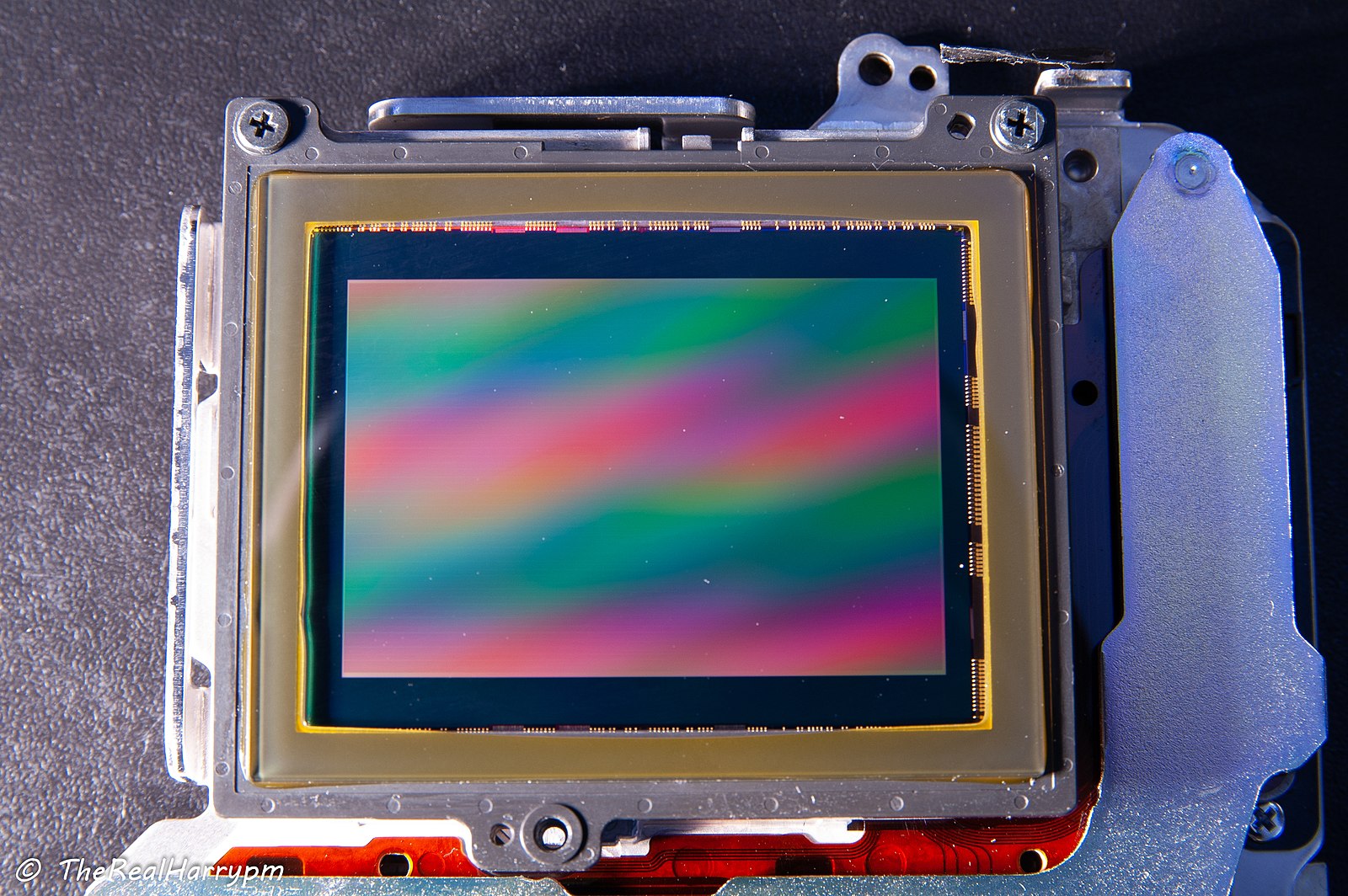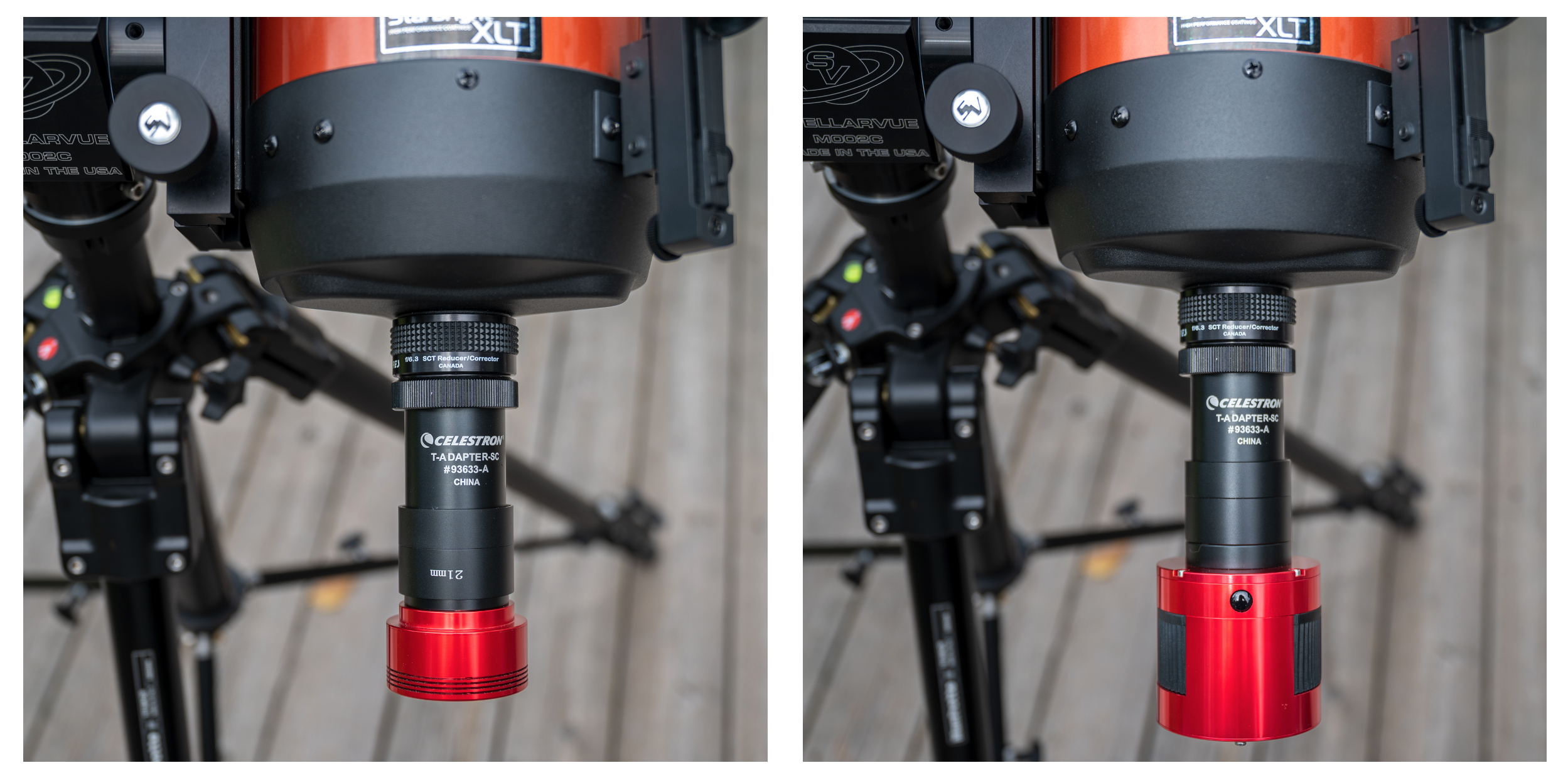-
Alışveriş sepetiniz boş!
Over the past several years, Chinese manufacturer ZW Optical (ZWO) has continued to introduce a series of CMOS astronomy cameras for planetary and deep-sky astronomy imaging that have developed a large following among amateur astronomers. These cameras are easy to use, affordable, compact, and they work with standard camera control and imaging software. They also have high quantum efficiencies that rival CCD-based cameras, once the preferred technology for astronomy imagers. ZWO also has a series of accessories for their cameras such as filter wheels, WiFi-enabled controllers, and adapters that make their astronomy cameras more versatile and easier to use for solar system imaging, deep-sky imaging, and electronically-assisted astronomy (EAA).

Figure 1 - A full-frame (36mm X 24mm) CMOS Sensor. (Image credit: Harry M. used under).
However, as more ZWO cameras are introduced, it becomes challenging, especially for beginning astronomy imaging enthusiasts, to select a camera from the growing product line. At first glance, the sheer variety of available ZWO cameras, coupled with the array of model numbers and other specifications, can be difficult to navigate.
It explains the key specifications of ZWO astronomy cameras including sensor size, pixel size, read noise, download rate, cooling, and CMOS color astronomy cameras vs. monochrome astronomy cameras. It also helps you narrow down your choices and select the best astrophotography camera for your interests, equipment, and budget. While this guide is geared towards the first-time astronomy camera buyer, intermediate and advanced imagers should also find this content - especially the summary specification tables - useful in making their choices.

Figure 2 - Three types of ZWO astronomy cameras, from left to right, autoguiding cameras, an uncooled planetary camera, and a cooled deep-sky camera. Image credit: ZWO.
ZWO currently offers cameras in three main categories: planetary and lunar/solar imaging, deep-sky imaging, and autoguiding cameras. This section provides a quick overview of each type of camera to help you get oriented. Later sections dive into the details of each type of camera.
For all cameras in the ZWO product line, monochrome cameras have an 'MM' designation as in, for example, ASI1600MM. Color cameras have an 'MC' designation, such as the ASI294MC camera.
The ZWO deep-sky cameras use thermoelectric coolers (TECs) to reduce the temperature of the sensor to reduce noise. These cameras have a 'Pro' designation to distinguish them from uncooled cameras for solar system imaging and the now discontinued first generation 'Cooled' ZWO cameras. ZWO 'Pro' cameras also include a memory buffer to improve and stabilize data transfer from the camera to a computer. For example, the ASI2600MC-Pro is a color camera with TEC cooling and memory buffer.
The ZWO Mini cameras, which have a 'Mini' designation, are monochrome cameras with smaller form factors and USB2.0 interfaces that are ideal for use as autoguiders. An example is the ASI174MM-Mini. These cameras fit directly into a 1.25" focuser of a guide scope.
Each ZWO camera has a number associated with it with the prefix ASI. For example, the ASI290MM is a popular planetary camera, while the ASI6200MM-Pro is a high-end deep-sky camera. These numbers refer to either the Sony sensor used in the camera or to the resolution of the camera in megapixels. The ASI290MM uses the Sony IMX290 CMOS sensor; the ASI6200MM-Pro has a resolution of 62 megapixels and uses the Sony IMX455 CMOS sensor.
Planetary, solar, and lunar telescope cameras (or solar-system cameras) are typically smaller, lighter, and usually less expensive than deep-sky cameras. Because planets and the Moon and Sun do not have a large angular size, these cameras usually have smaller CMOS sensors which make them less expensive. Smaller sensors, since they have fewer pixels, also have faster rates of data transfer which is important for planetary imaging. These cameras all have USB3.0 interfaces.
Solar-system cameras generally do have a mechanism to cool the sensor during operation, which is usually not required for the short exposures used for imaging bright solar-system objects. But despite the modest specification of these cameras, many experienced solar-system observers produce superb images with cameras that cost just a few hundred dollars.
ZWO solar-system cameras mostly incorporate color sensors, though a few use monochrome sensors which are typically used with sets of external filters and standard processing techniques to produce color images.
Table 1a lists the current selection of ZWO cameras for imaging solar system objects and includes the key specifications of the size of the sensor diagonal and the sensor format, a number related to the shape and size of the camera (but which is not a precise measure of the size of the sensor itself). These and other specifications will be discussed in more detail in the following sections. Many of these solar system cameras can also be used for electronically-assisted astronomy (EAA) of solar system or deep-sky objects.
| ASI120MC-S | 6 | 1/3" | Color | Planetary, autoguiding |
| ASI120MM-S | 6 | 1/3" | Mono | Planetary, autoguiding |
| ASI224MC | 6.1 | 1/3" | Color | Planetary, autoguiding |
| ASI290MM | 6.4 | 1/3" | Mono | Planetary, Lunar, Solar, EAA |
| ASI462MC | 6.4 | 1/2.8" | Color | Planetary, Lunar, Solar, EAA |
| ASI662MC | 6.4 | 1/2.8" | Color | Planetary, Lunar, Solar, EAA |
| ASI385MC | 8.4 | 1/1.9" | Color | Planetary, Lunar, EAA |
| ASI678MC | 8.8 | 1/1.8" | Color | Planetary, lunar, solar (at short focal ratios) |
| ASI178MM | 8.9 | 1/1.8" | Mono | Planetary, lunar, solar (at short focal ratios) |
| ASI178MC | 8.9 | 1/1.8" | Color | Planetary, lunar, solar (at short focal ratios) |
| ASI482MC | 12.8 | 1/1.2" | Color | Planetary, lunar, solar |
| ASI585MC | 12.9 | 1/1.2" | Color | Planetary, lunar, solar |
| ASI174MM | 13.3 | 1/1.2" | Mono | Lunar, Solar, planetary, EAA |
| ASI183MM | 15.9 | 1" | Mono | Lunar, Solar |
| ASI183MC | 5.9 | 1" | Color | Lunar, Solar, planetary, EAA |
| ASI432MM | 17.6 | 1.1" | Mono | Solar, lunar (at long focal ratios) |
| ASI1600MM | 22.2 | 4/3" | Mono | Lunar, solar, planetary, EAA |
| ASI294MM | 23.1 | 4/3" | Mono | Lunar, Solar, planetary, EAA |
| ASI294MC | 23.1 | 4/3" | Color | Lunar, Solar, planetary, EAA |
Table 1a - A list of ZWO uncooled cameras. These cameras are primarily intended for imaging the planets, Sun, and Moon. Some are also effective tools for electronically-assisted astronomy (EAA).
Deep-sky imagers usually use telescope cameras that incorporate on-board cooling since they often use long exposures of many seconds or minutes where thermal noise becomes a problem. These cameras also use larger sensors that capture a bigger angular size of the night sky, an important consideration when capturing large celestial objects like emission nebulae or supernova remnants. As a result, cameras for imaging deep-sky objects (DSOs) are generally larger and more expensive than solar-system cameras. These cameras also all have USB3.0 interfaces.
The smaller-sensor DSO cameras have a similar sensor size to the larger-sensor solar-system cameras, while the largest DSO cameras have large APS-C and full-frame sensors, the same as commercial mirrorless or DSLR cameras, that capture low-noise images of large expanses of sky. ZWO deep-sky cameras incorporate both monochrome and color sensors, and some models are available in both formats. Table 1b lists the current selection of deep-sky ZWO cameras and their sensor sizes. ZWO gives all these cameras a 'Pro' designation because they include on-board cooling and other advanced features.
| ASI533MM-Pro | 16 | 1" | Mono | Square format |
| ASI533MC-Pro | 16 | 1" | Color | Square format |
| ASI183MM-Pro | 15.9 | 1" | Mono | |
| ASI183MC-Pro | 15.9 | 1" | Color | |
| ASI183GT | 15.9 | 1" | Mono | Integrated filter wheel |
| ASI1600MM-Pro | 22.2 | 4/3" | Mono | |
| ASI1600GT | 22.2 | 4/3" | Mono | Integrated filter wheel |
| ASI294MM-Pro | 23.1 | 4/3" | Mono | |
| ASI294MC-Pro | 23.1 | 4/3" | Color | |
| ASI071MC-Pro | 28.3 | APS-C | Color | APS-C sensor |
| ASI2600MM-Pro | 28.3 | APS-C | Mono | APS-C sensor |
| ASI2600MC-Pro | 28.3 | APS-C | Color | APS-C sensor |
| ASI2400MC-Pro | 43.3 | Full Frame | Color | Full-frame sensor |
| ASI6200MM-Pro | 43.3 | Full Frame | Mono | Full-frame sensor |
| ASI6200MC-Pro | 43.3 | Full Frame | Color | Full-frame sensor |
Table 1b - A list of ZWO cooled 'Pro' cameras. These cameras are primarily intended for deep-sky imaging. Some are also effective tools for imaging solar-system objects using the 'region of interest' feature in many image capture software applications.
ZWO also offers a small selection of cameras for autoguiding. These autoguiders are the size of small 1.25” eyepieces and they feature slower USB2.0 data interfaces that help make them relatively affordable. Table 1c lists the current offering of dedicated ZWO autoguiders. Some astrophotographers also use ZWO planetary cameras listed in Table 1a for autoguiding.
| ASI120MM-Mini | 6 | 1/3" | Mono |
| ASI290MM-Mini | 6.4 | 1/3" | Mono |
| ASI174MM-Mini | 13.3 | 1/1.2" | Mono |
Table 1c - A list of ZWO 'Mini' autoguiding cameras
With this overview in mind, now let's dive into the details of key specifications of all three of these types of ZWO astronomy cameras.

Figure 3 – A ZWO solar system camera (ASI290MM, left) and a deep-sky camera (ASI533MC-Pro, right) attached to a Schmidt-Cassegrain telescope.
All ZWO astronomy cameras are housed in CNC machined red-anodized aluminum bodies that stand up to heavy field use. Not all cameras are the same size, however, but each fall into one of five form factors:
The Pro cameras are larger than the other cameras because they must accommodate large heat sinks and fans to manage heat flow. Figure 3 above shows a small uncooled 'solar system' camera and a cooled 'Pro' camera at the focuser of a telescope.
With the exception of the Mini cameras and the largest deep-sky cameras with full-frame sensors, ZWO camera bodies also feature a standard T / T2 M42x0.75 internal (female) thread interface on the telescope/lens side. This thread is very commonly used in astronomy and photography, allowing you to attach a wide variety of adapters and other accessories to the camera body. The large full-frame cameras use an M54x0.75 thread (see Figure 4).
(For a primer on astronomy threads, see our guide).

Figure 4 – The front face of two ZWO cameras with M42 threads and one with M54 threads
| ASI120MC-S | 62/2.4 | 100/3.5 | 12.5 | Yes | UV-IR |
| ASI120MM-S | 62/2.4 | 100/3.5 | 12.5 | Yes | AR |
| ASI224MC | 62/2.4 | 120/4.2 | 12.5 | Yes | AR |
| ASI290MM | 62/2.4 | 120/4.2 | 12.5 | Yes | AR |
| ASI462MC | 62/2.4 | 120/4.2 | 12.5 | Yes | AR |
| ASI662MC | 62/2.4 | 120/4.2 | 12.5 | Yes | UV-IR |
| ASI385MC | 62/2.4 | 120/4.2 | 12.5 | Yes | AR |